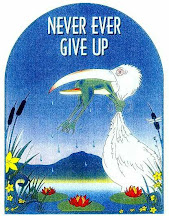
I have had this plant in our yard many years, and while I am aware it CAN be invasive, there are always ways of taking care of that. One of the reasons I like it is the color, the texture and the bees like it.
Several years ago a botanist and a friend of mine [Dot] added a bit of a side note to this plant that thoroughly intrigued me. There are a few folkloric references to herbal uses for Lamb's Ears, like to staunch wounds (thus the old name woundwort) and as a washcloth. How kewl is that?
A couple of years ago while mowing the back Forty, I was stung in the finger by a wasp. While needing to finish my task, just because that is the way it is, I dabbed some mud on the sting and wrapped it with a leaf of the Lamb’s ear. About 2 hours later when I had finished my chore and was washing up inside I noticed that the redness was gone and the swelling reduced.
Mud…leaf…Combo going on here? Heyya it WORKED! Besides I was too far from the Aloe Plant!
Stachys byzantina. The common name is given variously as "lamb's ear" or "lamb's ears." The singular may follow traditional usage more closely.Lamb’s ears produce leaves with a shape similar to that of a real lamb's ears; they're also velvety soft, further lending themselves to the comparison. The first half of the scientific name is also descriptive. The genus name, Stachys, is Greek for "an ear of grain," referring to the shape of the flower spikes. The species name, byzantina, refers to the plant's Middle Eastern origin, including an area that was once part of the Byzantine Empire.


2 comments:
I've been seeing this plant a lot lately and was wondering what it was called - I think it is absolutely beautiful!
I know, I know... I need to star blogging again... LOL!
Thanks for the Awesome Print Shop photo...
Do I dare BLOG it?
Still makes me cry Happy Tears. You are a good friend.
Post a Comment